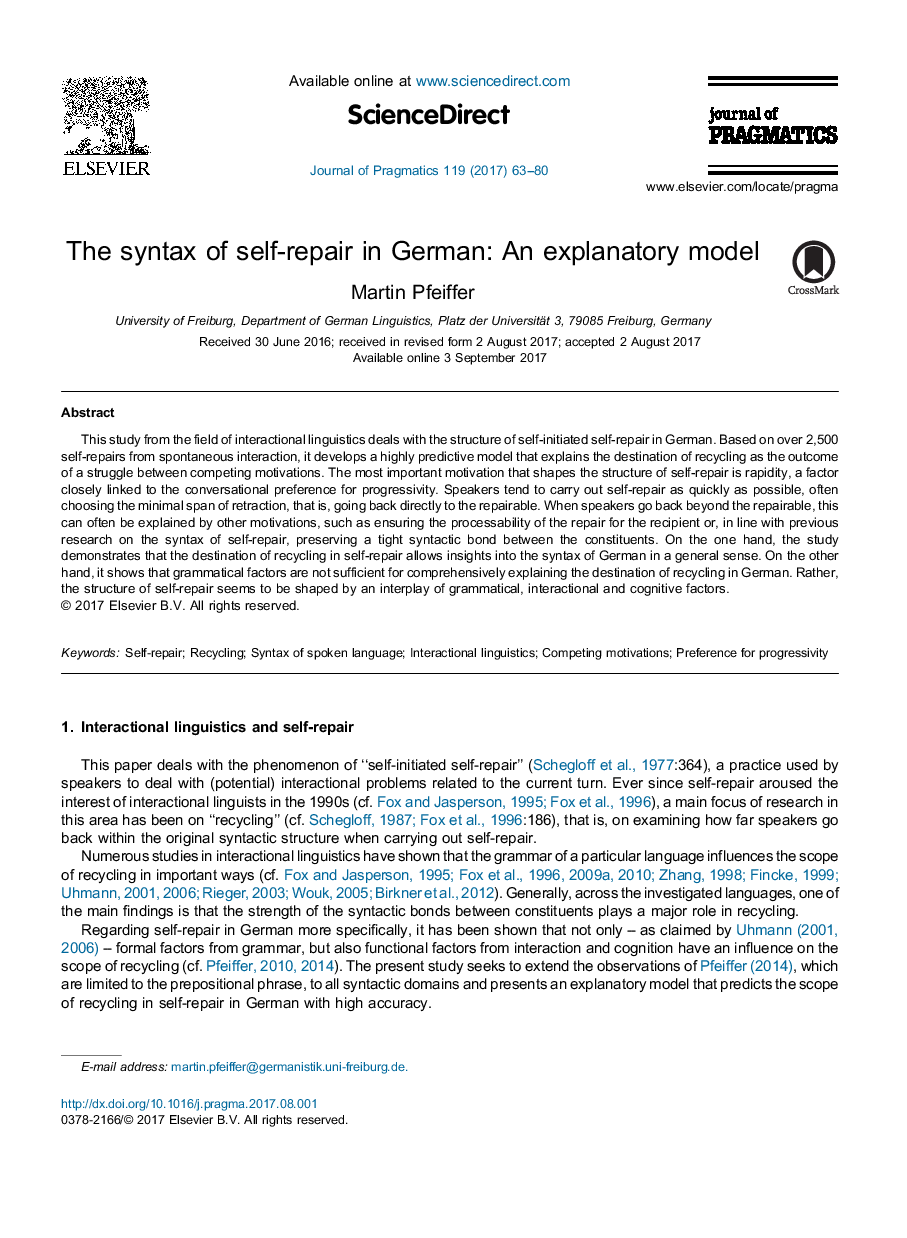| Article ID | Journal | Published Year | Pages | File Type |
|---|---|---|---|---|
| 5042704 | Journal of Pragmatics | 2017 | 18 Pages |
â¢This paper shows that the destination of recycling in self-initiated self-repair can be explained by competing motivations.â¢The competing motivations are not only grammatical, but also cognitive and interactional in nature.â¢The syntactic structure of self-repair is crucially shaped by the interactional pressure exerted by the preference for progressivity.â¢The destinations of recycling in self-repair allow insights into the syntax of German in a general sense.
This study from the field of interactional linguistics deals with the structure of self-initiated self-repair in German. Based on over 2,500 self-repairs from spontaneous interaction, it develops a highly predictive model that explains the destination of recycling as the outcome of a struggle between competing motivations. The most important motivation that shapes the structure of self-repair is rapidity, a factor closely linked to the conversational preference for progressivity. Speakers tend to carry out self-repair as quickly as possible, often choosing the minimal span of retraction, that is, going back directly to the repairable. When speakers go back beyond the repairable, this can often be explained by other motivations, such as ensuring the processability of the repair for the recipient or, in line with previous research on the syntax of self-repair, preserving a tight syntactic bond between the constituents. On the one hand, the study demonstrates that the destination of recycling in self-repair allows insights into the syntax of German in a general sense. On the other hand, it shows that grammatical factors are not sufficient for comprehensively explaining the destination of recycling in German. Rather, the structure of self-repair seems to be shaped by an interplay of grammatical, interactional and cognitive factors.
